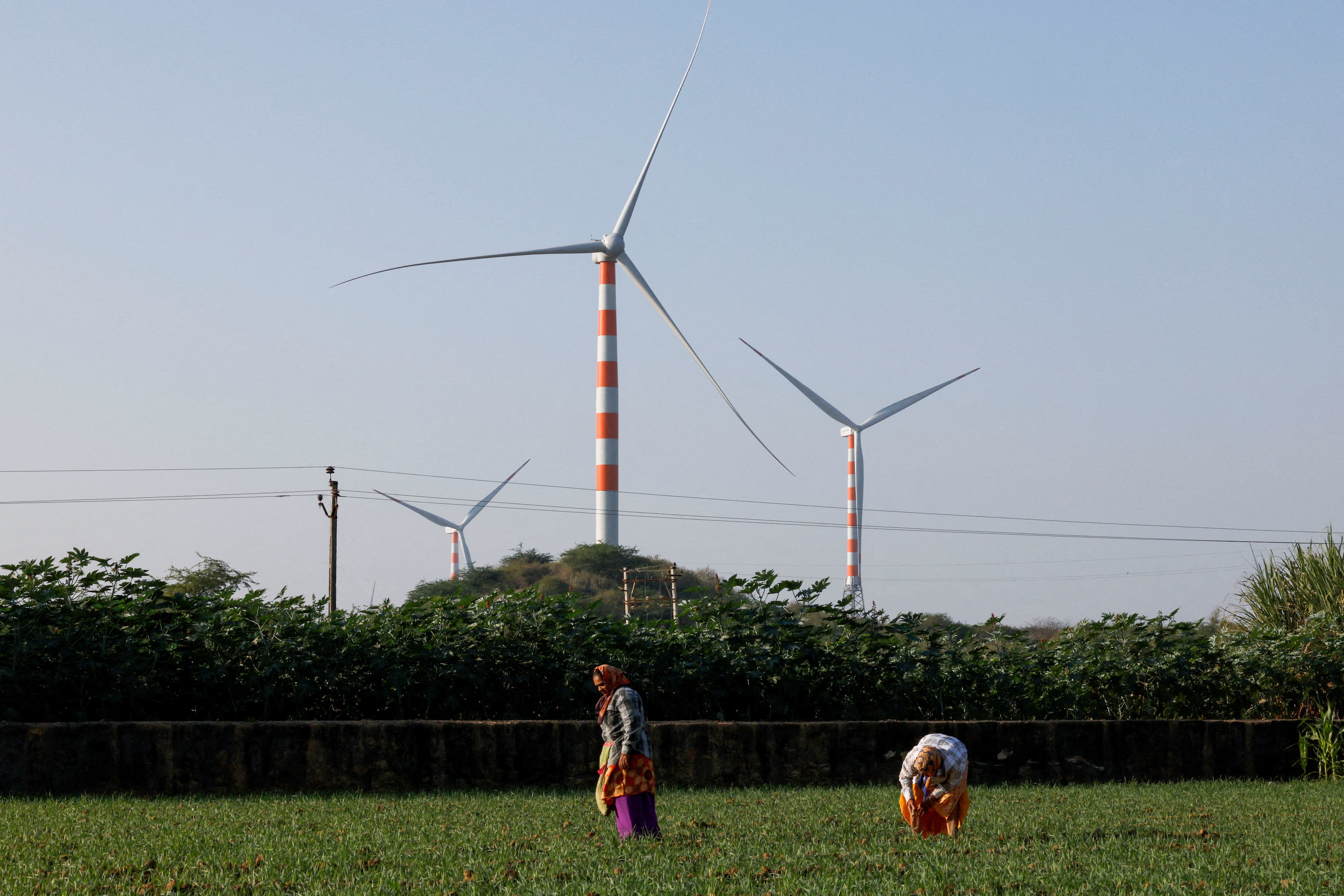Turning COP26’s energy and enthusiasm into citywide change

The average age of an urban tree is 10, and we know that to receive the fullest benefits of urban trees, they need to be living beyond 50.
Image: Nerea Martí Sesarino / Unsplash
Stay up to date:
UpLink
- It’ll be almost impossible to meet net zero or 1.5°C temperature targets without unilateral approaches.
- Collectively, we’ve undervalued trees, and we’re becoming increasingly aware of their immense systemic benefits.
- TreesAI works alongside innovators and municipalities to help cities and citizens view their green spaces as powerful social, cultural and financial assets.
A global climate conference like last year's COP26 is both exciting and exhausting, and it’s difficult not to feel a comedown when, after being top of the agenda, the climate returns to compete with other issues on public and political agendas; a global pandemic, poverty, dwindling budgets and other concerns of the world.
This COP felt different to previous editions. Historically there’s been heavy emphasis on climate science and climate politics, but this time, with matters seeming more urgent, the question of climate change was addressed to the finance community, shifting the focus from political or environmental solutions towards financial solutions.
If we reduced our experience of the activities in Glasgow to one key message it would be that it’ll be almost impossible to meet net zero or 1.5°C temperature targets without unilateral approaches. To support the restoration of nature, we'll need synchronised approaches that connect the private sector, the public sector and the general public. Climate change is a question for the political, bureaucratic, cultural and financial sectors. These interdependencies are amplified in the dense centres of living, in our cities.
What is the World Economic Forum doing to promote sustainable urban development?
Planting and maintaining urban trees is typically the responsibility of the public sector, their cost is allocated to parks or environmental departments. But collectively, we’ve undervalued trees, and we’re becoming increasingly aware of their immense systemic benefits. They sequester carbon, but they also provide support to health and mental wellbeing services, around schools they dampen noise, and improve educational attainment, provide a sustainable building material, and for finance and insurance enthusiasts, trees are a natural hedge, providing stability and reducing flood risk induced by extreme weather.
For these reasons, we’ve established ambitious global tree planting targets, but our historical shortcomings are affecting society's most vulnerable people, with coronavirus exposing deep inequalities in access to green space. In the UK, 295 deprived neighbourhoods of 440,000 people are considered grey deserts, with no trees or accessible green space.
Politicians are ever enthusiastic for tree planting, so are corporations seeking to hit ambitious ESG targets. Soberingly, this is just the beginning of the work. Beyond the photo opportunities tree planting provides, tree maintenance is the more pressing issue. Hurricane Filomena devastated a third of Madrid's trees, and Ash Dieback is forecasted to affect 12,5% of Glasgow tree stock in the coming 10 years. The average age of an urban tree is ten, and we know that to receive the fullest benefits of urban trees, they need to be living beyond fifty, so we also need to rethink the ways we maintain tree stocks. This cannot be the work of a parks department alone, the long-term stewardship of urban green spaces requires the wide participation and interaction between its multiple stakeholders and beneficiaries.
During COP26, we presented TreesAI—a cloud-based platform, built to address declining tree stocks in cities. By reconceiving trees as assets, we hope to help cities become more resilient in the face of climate disaster. We’ve been working alongside Glasgow over the past year and we’ve since become official partners with Glasgow City Council to launch our first pilot, and help the city grow healthy urban forests.
TreesAI both complements and builds upon the work of several innovative, nature-based projects currently taking place around the world. CityLAB in Berlin, TreeFolks in Austin, Melbourne Forest Visual, and NYC Street Trees are among the several services encouraging citizens to participate in the mapping, monitoring and maintenance of urban tree stocks. Tree Tracker collects and makes available information on trees, while ForesTree and Ezytreev provide improved infrastructure for forest management.
There’s also lots of innovation on the financial side. Abundance Capital helps investors put money towards funding the infrastructure for climate emergency and a greener future. Environmental Impact Bond is the USA’s first green impact bond service, Forest Resilience Bond encourages private investment in forest restoration. ForestaMI is already working to connect a large public and private network, and aims to plant three million trees in Milan. GainForest is a decentralised fund using artificial intelligence to measure and reward sustainable nature stewardship.
These are just a handful of the many initiatives building the collective tools and infrastructure to re-evaluate our relationships with nature, within economic, cultural and bureaucratic paradigms.
Ultimately we aim to work alongside these innovations and municipalities to empower them to view their green spaces as powerful social, cultural and financial assets, aiming to ensure an equitable distribution of benefits to all residents and businesses, and to establish urban trees as a true Nature-based Solution helping us to tackle our climate emergency.
We know Nature-based Solutions have the potential to address ⅓ of the cost-effective climate change mitigation worldwide. The recent lockdowns due to COVID-19 pandemic have highlighted the value of green urban spaces for our physical and mental wellbeing, and the plethora of ecosystem processes which we all benefit from each day.
If we’re serious about climate targets then the ways we’re building, living in and maintaining cities requires urgent change; our challenge is to move beyond the energy and enthusiasm of COP26, while keeping the climate on the agenda, recognising it as part of a deeply interconnected crisis in which we are all stakeholders. Fundamentally, our role now is to pay attention to nature, to congregate around trees, much like our ancestors did generations ago, only now through stewardship with access to a new generation of technological, bureaucratic and financial tools and relationship practices.
Don't miss any update on this topic
Create a free account and access your personalized content collection with our latest publications and analyses.
License and Republishing
World Economic Forum articles may be republished in accordance with the Creative Commons Attribution-NonCommercial-NoDerivatives 4.0 International Public License, and in accordance with our Terms of Use.
The views expressed in this article are those of the author alone and not the World Economic Forum.
Related topics:
Forum Stories newsletter
Bringing you weekly curated insights and analysis on the global issues that matter.
More on Energy TransitionSee all
Charles Bourgault and Sarah Moin
August 19, 2025
Jürgen Karl Zattler and Adrian Severin Schmieg
August 18, 2025
Piyush Verma
August 18, 2025
Valentin Chomel and Jacques-Alexis Verrecchia
August 14, 2025
Gaurav Upadhyay and Labanya Prakash Jena
August 8, 2025
David Timis
August 8, 2025






